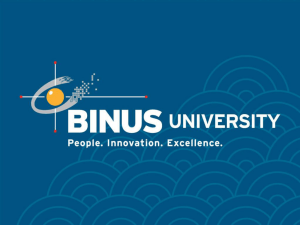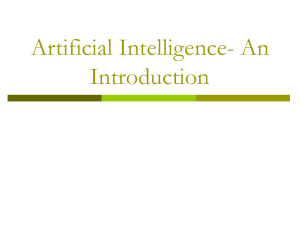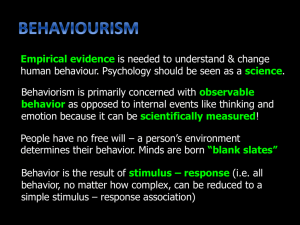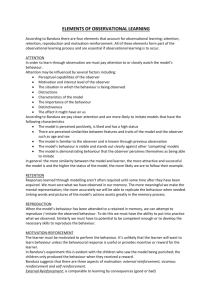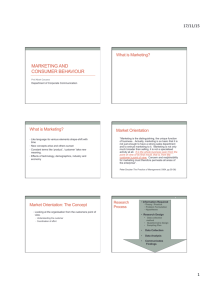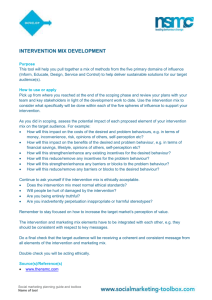classroom management theories
advertisement
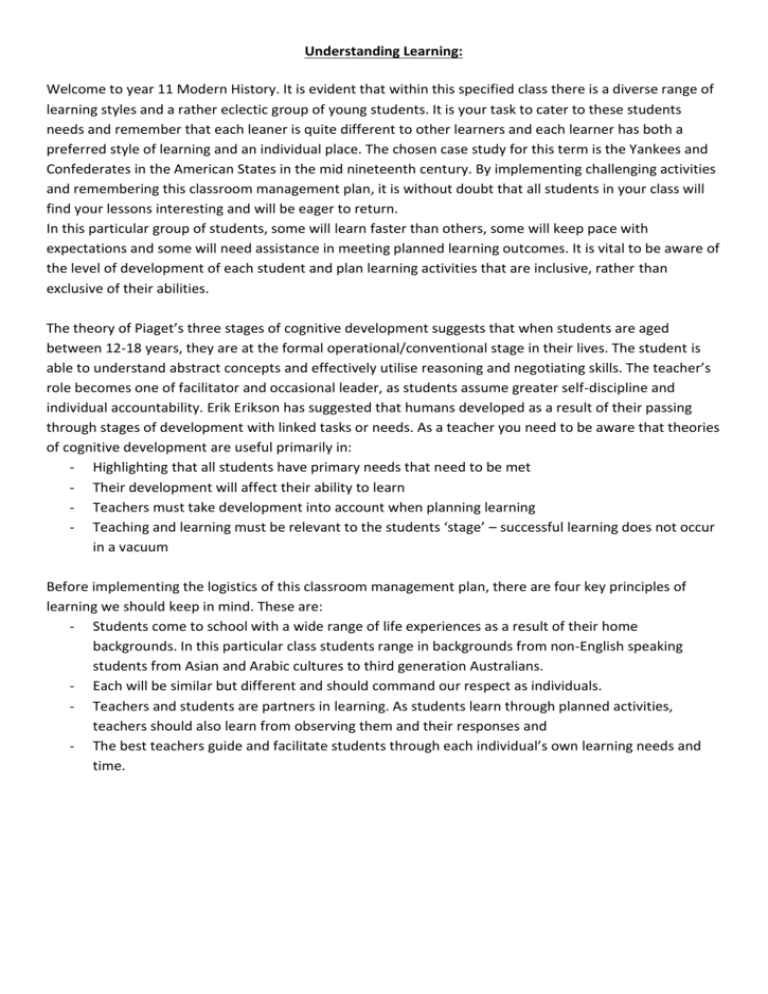
Understanding Learning: Welcome to year 11 Modern History. It is evident that within this specified class there is a diverse range of learning styles and a rather eclectic group of young students. It is your task to cater to these students needs and remember that each leaner is quite different to other learners and each learner has both a preferred style of learning and an individual place. The chosen case study for this term is the Yankees and Confederates in the American States in the mid nineteenth century. By implementing challenging activities and remembering this classroom management plan, it is without doubt that all students in your class will find your lessons interesting and will be eager to return. In this particular group of students, some will learn faster than others, some will keep pace with expectations and some will need assistance in meeting planned learning outcomes. It is vital to be aware of the level of development of each student and plan learning activities that are inclusive, rather than exclusive of their abilities. The theory of Piaget’s three stages of cognitive development suggests that when students are aged between 12-18 years, they are at the formal operational/conventional stage in their lives. The student is able to understand abstract concepts and effectively utilise reasoning and negotiating skills. The teacher’s role becomes one of facilitator and occasional leader, as students assume greater self-discipline and individual accountability. Erik Erikson has suggested that humans developed as a result of their passing through stages of development with linked tasks or needs. As a teacher you need to be aware that theories of cognitive development are useful primarily in: - Highlighting that all students have primary needs that need to be met - Their development will affect their ability to learn - Teachers must take development into account when planning learning - Teaching and learning must be relevant to the students ‘stage’ – successful learning does not occur in a vacuum Before implementing the logistics of this classroom management plan, there are four key principles of learning we should keep in mind. These are: - Students come to school with a wide range of life experiences as a result of their home backgrounds. In this particular class students range in backgrounds from non-English speaking students from Asian and Arabic cultures to third generation Australians. - Each will be similar but different and should command our respect as individuals. - Teachers and students are partners in learning. As students learn through planned activities, teachers should also learn from observing them and their responses and - The best teachers guide and facilitate students through each individual’s own learning needs and time. Classroom Management Plan: Successful Teaching is more about Successful Attitudes than Factual Absorption. Kounin (1970) suggests that central to classroom management is the position of the teacher in maintaining a positive learning environment where each student is able to learn without disturbance. Classroom management is fundamentally a four-fold process by the teacher actively; - Providing interesting, challenging activities that fully engage the learner - Minimising problems as they appear - Responding appropriately to a disturbance - (in order to) prevent further problems Here are seven crucial phases to consider in effective classroom management: 1. Classroom Rules: or policies or guidelines - Establish a clear set of rules and procedures for your classroom to help communicate expectations for appropriate behaviour - Set around six general rules that sufficiently cover the most important areas of behaviour. For example: 1. Bring all needed material to class 2. Be in your seat and ready to work when the bell rings 3. Respect and be polite to all people 4. Listen and stay seated when someone is talking 5. Respect other people’s property 6. Obey all school rules - Involve students in rue setting to promote student ownership of the rules and more student responsibility for their own behaviour - Not every rule needs to be influenced by discipline, rules can be creative and fun and a combination of these elements will create a classroom set of rules that provide interaction, discussion and creativity all with a basis of discipline 2. Teacher Awareness: - Teacher needs to project an image of total alertness to students behaviour, attention and task involvement, thereby minimising problems before they become major concerns - Scanning – constantly observe students collectively and individually - Eye contact – engage students and alert them to the teacher’s awareness if their moving off task - Movement and proximity – allows the teacher to monitor students work and ensures that students remain on task. The teachers very presence negates possible disruptions occurring - Be aware of several student demands at the one time - Listen to one student or checking their work, while visually scanning other areas - Use a room arrangement consistent with your instructional goals and activities - Have a designated seating plan and ensure that all students follow it 3. Clear Directions: - Ensure that students are clear as to the task being focussed upon - Provide clear and simple directions - Progress or sequence learning activities without interruption. Have suitable transition phases within activities Effective lesson planning with clear introduction, development and a summative closure 4. Desisting: (if absolutely necessary) - Be positive of both the nature and person requiring the reprimand. Reprimands should only be required infrequently, if the other components of classroom management are applied - Empathetic responding - this will reinforce to that particular student that they are an integral part of the classroom. The issue at hand should be explored in the context of a discussion where both parties are talking which is more effective than a “teacher authoritative approach” 5. Reinforcement: a positive approach to detect minor or potential problems - Use verbal reinforcers to redirect the attention of the student moving off task - Comment on the student’s progress, work attitude or achievement 6. Teacher Flexibility and Positive Reinforcement: - Be prepared and consider other approaches, even those suggested by students. - Balance teacher directed learning with student directed learning - Reinforce concepts and motivate learning - Active listening – ensure that all students listen to others without interrupting - Building Rapport: A strong positive relationship built between student and teacher through good communication. 7. Managing Student Work: - Discuss course requirements with your students - Keep a system for recording and assigning students grades - Have set procedures for giving students feedback about their performance
